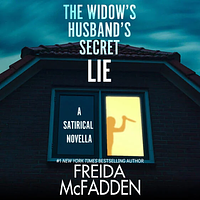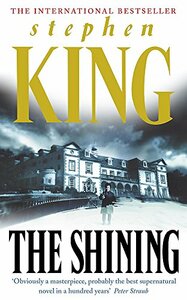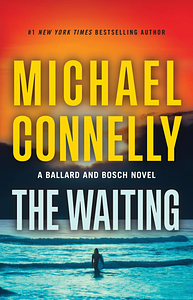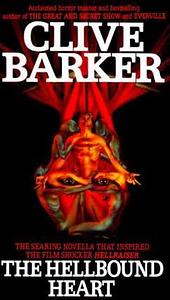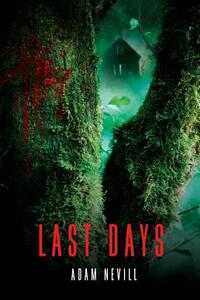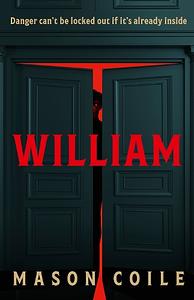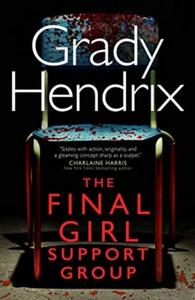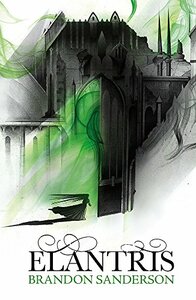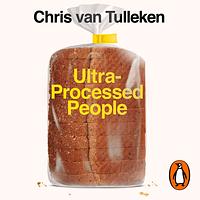Take a photo of a barcode or cover
dannys_book_corner's Reviews (41)
dark
mysterious
sad
tense
fast-paced
Plot or Character Driven:
A mix
Strong character development:
No
Loveable characters:
Complicated
Diverse cast of characters:
Complicated
Flaws of characters a main focus:
Yes
Premise
The Final Girl Support Group (“TFGSG”) has a unique and smart premise: what happens to the final girls of the classic slashers the credits start rolling and the audience leaves the cinema? They’ve survived the blood-thirsty massacres and now have to live with their harrowing experiences, how do they cope with their trauma and what kind of lives can they now be expected to live? TFGSG wants to tackle that premise and does so by drawing a lot of influence from the films that made the genre whilst preserving Grady Hendrix’s own method of storytelling.
What did I like
The plot really was a highlight of TFGSG and one of my favourite aspects. I would say this is a thriller/mystery rather than a horror, so if you’re looking for a good scare then I’d try elsewhere. The plot wasn’t necessarily ground-breaking in how it unfolded, but it was still an exciting read with memorable characters that kept me absorbed in the book. I particularly enjoyed the fact that the main character is an unreliable narrator, meaning that you can’t always trust what she tells you. Hendrix also spatters a good amount of humour into the book which can be uplifting in certain scenarios.
The main group of characters (the final girls) are interesting and have their own complex personalities. There is no perfect character and they may not always get along, they are hurt individuals that are in need of a therapy that few can give them. As we are introduced to each of the final girls in turn we learn about their origins which uses plot points from various classic slasher films including Halloween, A Nightmare on Elm Street, and Friday the 13th. They all react differently to their different but shared pasts, whether that be becoming an alcohol or a recluse, and Hendrix articulates this well in each one. A strong point of TFGSG is understanding how the main character has adapted her life to the trauma of her past, and how that has affected her interactions with the world with us, the reader, learning about her methods of survival as the story progresses. There aren’t too many supporting characters to keep a track of and the author does a fantastic job in making them real, even when they have little page time.
Interspersed between chapters we get write-ups on the fall-out of the final girl’s traumas which were a fun and clever distraction from the main story. They rarely affected the pacing of the book because the author clearly has a wealth of knowledge of this genre and wrote these in a fun, interesting manner.
What didn’t work for me
Whilst the premise is unique, the execution for me still leaned too much into tropes and cliches, despite it reading at first as a story that was going to avoid these. The idea behind following the survivors was great, and a lot of the build-up to the ending was different from the usual picking-characters-off-one-at-a-time method, but towards the end the story still relied on tropes that have graced slasher films for many years. I would have liked to have been surprised in more ways.
I mentioned the flawed main character, a final girl that is untrustworthy but has been on edge ever since her incident. At times she felt a bit clueless, and while I don’t want a perfect main character I would have liked a bit more competency from her to care more about her. While she does, however, come more into her own when the other final girls are in need, I would have liked this attitude earlier in the story. I found myself caring more for some of the supporting cast than her.
Conclusion
TFGSG is a fun, binge-worthy read that, while ends up not being as ground-breaking as I’d hoped, is certainly worth your time. If you’re in a bit of a reading slump then TFGSG is worth a go as it gets into its groove early and doesn’t let up until the final page.
I’d recommend this to people who like thrillers and mysteries sprinkled with easter eggs and pop culture references. You ideally want to be somewhat familiar with the films that the book is influenced by to appreciate it fully (although not necessarily all sequels and prequels and retcons and reboots), but this isn’t essential and doesn’t stop this being a fun read because much of the backstories are provided throughout the book.
The Final Girl Support Group (“TFGSG”) has a unique and smart premise: what happens to the final girls of the classic slashers the credits start rolling and the audience leaves the cinema? They’ve survived the blood-thirsty massacres and now have to live with their harrowing experiences, how do they cope with their trauma and what kind of lives can they now be expected to live? TFGSG wants to tackle that premise and does so by drawing a lot of influence from the films that made the genre whilst preserving Grady Hendrix’s own method of storytelling.
What did I like
The plot really was a highlight of TFGSG and one of my favourite aspects. I would say this is a thriller/mystery rather than a horror, so if you’re looking for a good scare then I’d try elsewhere. The plot wasn’t necessarily ground-breaking in how it unfolded, but it was still an exciting read with memorable characters that kept me absorbed in the book. I particularly enjoyed the fact that the main character is an unreliable narrator, meaning that you can’t always trust what she tells you. Hendrix also spatters a good amount of humour into the book which can be uplifting in certain scenarios.
The main group of characters (the final girls) are interesting and have their own complex personalities. There is no perfect character and they may not always get along, they are hurt individuals that are in need of a therapy that few can give them. As we are introduced to each of the final girls in turn we learn about their origins which uses plot points from various classic slasher films including Halloween, A Nightmare on Elm Street, and Friday the 13th. They all react differently to their different but shared pasts, whether that be becoming an alcohol or a recluse, and Hendrix articulates this well in each one. A strong point of TFGSG is understanding how the main character has adapted her life to the trauma of her past, and how that has affected her interactions with the world with us, the reader, learning about her methods of survival as the story progresses. There aren’t too many supporting characters to keep a track of and the author does a fantastic job in making them real, even when they have little page time.
Interspersed between chapters we get write-ups on the fall-out of the final girl’s traumas which were a fun and clever distraction from the main story. They rarely affected the pacing of the book because the author clearly has a wealth of knowledge of this genre and wrote these in a fun, interesting manner.
What didn’t work for me
Whilst the premise is unique, the execution for me still leaned too much into tropes and cliches, despite it reading at first as a story that was going to avoid these. The idea behind following the survivors was great, and a lot of the build-up to the ending was different from the usual picking-characters-off-one-at-a-time method, but towards the end the story still relied on tropes that have graced slasher films for many years. I would have liked to have been surprised in more ways.
I mentioned the flawed main character, a final girl that is untrustworthy but has been on edge ever since her incident. At times she felt a bit clueless, and while I don’t want a perfect main character I would have liked a bit more competency from her to care more about her. While she does, however, come more into her own when the other final girls are in need, I would have liked this attitude earlier in the story. I found myself caring more for some of the supporting cast than her.
Conclusion
TFGSG is a fun, binge-worthy read that, while ends up not being as ground-breaking as I’d hoped, is certainly worth your time. If you’re in a bit of a reading slump then TFGSG is worth a go as it gets into its groove early and doesn’t let up until the final page.
I’d recommend this to people who like thrillers and mysteries sprinkled with easter eggs and pop culture references. You ideally want to be somewhat familiar with the films that the book is influenced by to appreciate it fully (although not necessarily all sequels and prequels and retcons and reboots), but this isn’t essential and doesn’t stop this being a fun read because much of the backstories are provided throughout the book.
adventurous
funny
mysterious
fast-paced
Plot or Character Driven:
Character
Strong character development:
Complicated
Loveable characters:
Yes
Diverse cast of characters:
Yes
Flaws of characters a main focus:
No
Premise
The Real-Town Murders by Adam Robert’s is a fairly short and fun book reading at 230 pages. It describes itself as a fast-paced Hitchcockian thriller where the main character, Alma, becomes entangled in a political coup when she is hired to solve an impossible murder.
This is a multilayered book set in future Britain where real life is dominated by the presence of the Shine, the succession to the Internet. Like Ready Player One, we find that the citizens of this world prefer spending their time in their computer-generated life, so much so that the government has fractured into one that governs the real world and one that governs the Shine. Don’t go into this novel expecting it to read like Ready Player One, because Alma, our main character, has an aversion to the Shine and refuses to log in. It combines dystopia, science-fiction, crime noir, mystery, humour, power, and action to create an enjoyable, if brief, novel.
The Real-Town Murders by Adam Robert’s is a fairly short and fun book reading at 230 pages. It describes itself as a fast-paced Hitchcockian thriller where the main character, Alma, becomes entangled in a political coup when she is hired to solve an impossible murder.
This is a multilayered book set in future Britain where real life is dominated by the presence of the Shine, the succession to the Internet. Like Ready Player One, we find that the citizens of this world prefer spending their time in their computer-generated life, so much so that the government has fractured into one that governs the real world and one that governs the Shine. Don’t go into this novel expecting it to read like Ready Player One, because Alma, our main character, has an aversion to the Shine and refuses to log in. It combines dystopia, science-fiction, crime noir, mystery, humour, power, and action to create an enjoyable, if brief, novel.
Plot
I did enjoy the plot, it kept me entertained throughout and wondering just how this impossible murder happened. The plot was tight but not overly ambitious. Some of the plot points I found to be a little predictable, more so because the premise has been done many times. The delivery is what makes this book all the better, sometimes you don’t need to reinvent the wheel because the wheel still works.
On the surface, The Real-Town Murders reads as a locked-room mystery, but it steadily evolves into much more than that, demonstrating Robert’s ability to craft a story with more layers than a german tree cake. He is able to inject satire where needed, whilst keeping the plot grounded in a more serious tone. The humour itself is subtle rather than being in your face and anyone who has read Robert’s previous books would likely feel comfortable with this one. I haven’t read Robert’s since The Soddit in school, and even I recognised the writing style fairly quickly.
Characters
Robert’s has created a small cast of characters and this book benefits from that. I knew who each of the characters were, even when being reintroduced, in part due to their unique characteristics, quirks, and distinctive names. A highlight of the book is meeting these characters throughout Alma’s story and her interactions with them. Some of my favourite portions of The Real-Town Murders was her synergy with the supporting cast, in particular, how she deals with various levels of AI such as her door. It may sound ridiculous, but this scene in particular is written with wit and humour and adds to the world Robert’s has built in a satisfying way.
I would have liked to learn more about Alma, however. By the end of the book I didn’t real I knew much about her backstory, and while this isn’t always essential to understand or like a character, it would have helped me grow to appreciate her more. I wanted to know why Alma was considered to be the right person for the job, and I wanted to understand what made her tick. We know that Alma has carer duties to her partner Marguerite, and we are constantly reminded of how this is all Alma’s is focussed on, but surely there are other things that make her run.
World-Building
Robert’s has created a fully-realised not-quite-but-almost-there-dystopian Britain, where the Shine is the de-facto method of living. Even seeing 10 people out at once is considered a crowd. Because of these changes in population habits Robert’s has invented a re-imaged Britain, where towns are renamed in humorous ways, and the heads of famous brits are carved into the chalk cliffs looking out to France to lure people back into the real world. It’s a believable Britain (especially because we like questionable puns) and a future that is threatening to happen once the Internet is superseded.
What didn’t work for me
Repetition. Repetition. Repetition. I found myself getting frustrated at being told things I’d already been told multiple times before. Speaking about Alma’s integrated feed, on page 116 we are told , “And if she did that the police would be on her in moments.”. I already knew this consequence of linking back into her feed, which would allow her to be tracked, because I’d already been told it multiple times. In addition, the urgency to return to Marguerite is repeated at numerous points. I as the reader know and understand these, and felt my immersion break by being reminded of these facts, as though I would constantly forget them.
I also did found myself pausing with some of the dialogue. I understand and get that some of the characters are more comfortable interacting in the Shine and via their feeds rather than talking, but having to work out if the character is bumbling their words or if the dialogue if slightly off also broke my immersion. For example, when Alma is speaking to a support character, they say “‘I called you to ask you to call you, sorry. Sorry, I stumble over words.’”. While the speaker itself explains their stumbling, it’s this scattergun speak that forced me to go back and re-read to understand what was being said.
Conclusion
For the most part I enjoyed The Real-Town Murders. It’s story was intriguing and Alma was a great character, but I found myself wanting a bit more from her. If you’re a fan of both science-fiction and mystery, then I’d recommend at least trying this book out at some point. It doesn’t ask for much of your time and brings with it likeable humour and a satisfying ending.
adventurous
inspiring
slow-paced
Plot or Character Driven:
A mix
Strong character development:
Yes
Loveable characters:
Yes
Diverse cast of characters:
No
Flaws of characters a main focus:
No
informative
sad
medium-paced
